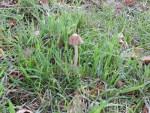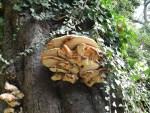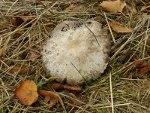 As the weather gets colder and wetter and the leaves are disappearing rapidly from the trees, signs of life in the wildlife world appear to be decreasing. However, beneath the carpet of reds, yellows and oranges that covers the ground, a whole new set of life is thriving.
As the weather gets colder and wetter and the leaves are disappearing rapidly from the trees, signs of life in the wildlife world appear to be decreasing. However, beneath the carpet of reds, yellows and oranges that covers the ground, a whole new set of life is thriving.
There are thought to be millions of different species of fungi around the world that can be found in a wide variety of shapes, sizes and colours, and with over 3,000 different species of mushrooms and toadstools found in the UK alone, there is plenty to look out for at this time of year.

Mushrooms and toadstools provide an incredibly important source of food for numerous animal species both throughout the UK and around the world, along with playing a crucial role in the healthy function of their native eco-systems.


